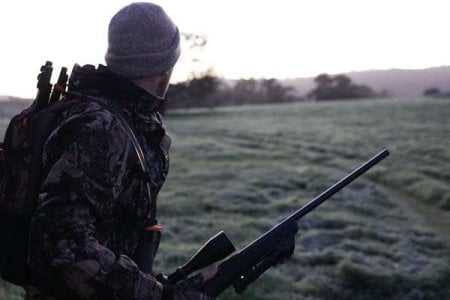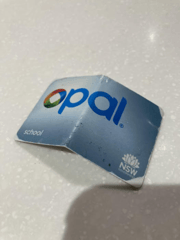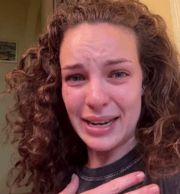You Won’t Believe What Australia Might Start Paying Hunters To Do—And Why It Could Affect You
By
Danielle F.
- Replies 30
Australia is no stranger to wild ideas when it comes to tackling its feral animal problem, but a new proposal out of New South Wales has really set the cat among the pigeons—quite literally! The state government is considering paying recreational hunters a cash bounty for every feral animal they kill, and the debate is heating up faster than a summer’s day in the Outback.
What’s the Proposal?
NSW Premier Chris Minns has floated the idea of offering hunters $20 for each feral animal they cull in regional areas. The target list includes pigs, cats, dogs, and rabbits—species that have been running rampant across the countryside, costing farmers millions in lost crops, damaged property, and threats to native wildlife. The numbers are staggering: invasive species are estimated to cost NSW farmers nearly half a billion dollars every year.
The plan, however, is not without its critics. Some are calling it a practical solution to a persistent problem, while others are labelling it 'barbaric and archaic.' So, what’s really at stake here?
The Case For Bounties: Farmers and Hunters Weigh In
For many in rural and regional communities, feral animals are more than just a nuisance—they’re a daily threat to livelihoods and the environment. NSW Farmers President Xavier Martin has thrown his support behind the proposal, pointing out that the current efforts aren’t enough. 'That’s a staggering amount of money, and that’s why we welcome the Premier’s approach to look at every option to slash the number of feral animals,' he said.
Shooters Party MP Robert Borsak is also a vocal supporter. He argues that recreational hunters are both more efficient and cost-effective than government-run programs. According to Borsak, recreational hunters shot 1.69 million pigs in 2024 alone, contributing over $100 million to the NSW economy—money that largely benefits rural communities. He claims that a $2 million bounty program could remove 100,000 feral animals, a fraction of the cost of current government efforts.
The Case Against: Animal Welfare and Effectiveness Concerns
Not everyone is convinced. Animal Justice Party MP Emma Hurst has slammed the proposal, calling it 'barbaric and archaic.' She argues that bounty programs encourage mass cruelty and have been criticised in other states, such as Victoria, for being both inhumane and ineffective. 'You don’t need to be an expert to see that arming the general public with guns and sending them off on a yahoo killing spree is not the answer, and, in fact, creates a risk for everyone in the community,' Hurst said.
Jack Gough, CEO of the Invasive Species Council, echoed these concerns, suggesting that bounties are more about political deals than effective pest management. He points out that science-backed solutions, like immuno-contraceptive programs, could offer more humane and sustainable results.
What’s Happening Elsewhere?
Bounty programs aren’t new in Australia. Victoria has run similar schemes, but they’ve faced heavy criticism for failing to make a significant dent in feral animal populations and for encouraging unethical behaviour, such as the killing of non-target species or the inhumane treatment of animals.
Meanwhile, government agencies like Local Land Services (LLS) have spent millions on pest control—$13.2 million in 2024 alone—yet only managed to remove 112,000 animals, mostly pigs. Critics argue that these programs are expensive and not delivering the results needed to protect farmers and native wildlife.
The Bigger Picture: Why Feral Animals Are Such a Problem
Australia’s unique environment is particularly vulnerable to invasive species. Feral pigs, cats, and foxes prey on native animals, destroy habitats, and spread disease. The impact on biodiversity is severe, with some native species pushed to the brink of extinction. For farmers, the economic toll is just as dire, with crops, fences, and water sources under constant threat.
Are Bounties the Answer?
The NSW government is keeping its options open. Environment Minister Penny Sharpe has said that bounties aren’t a 'silver bullet,' but they could be 'another tool in the toolbox.' She emphasised that large-scale, integrated pest management programs are still essential, but acknowledged that government can’t tackle the problem alone.
What Do You Think?
This is a classic Aussie dilemma: how do we balance the needs of farmers, the welfare of animals, and the health of our environment? Is paying hunters a fair and effective way to control feral pests, or is it a step backwards in animal welfare and public safety?

We’d love to hear your thoughts! Have you seen the impact of feral animals in your community? Do you think bounties are a good idea, or should we be looking for more humane solutions? Share your stories and opinions in the comments below—let’s get the conversation started!
What’s the Proposal?
NSW Premier Chris Minns has floated the idea of offering hunters $20 for each feral animal they cull in regional areas. The target list includes pigs, cats, dogs, and rabbits—species that have been running rampant across the countryside, costing farmers millions in lost crops, damaged property, and threats to native wildlife. The numbers are staggering: invasive species are estimated to cost NSW farmers nearly half a billion dollars every year.
The plan, however, is not without its critics. Some are calling it a practical solution to a persistent problem, while others are labelling it 'barbaric and archaic.' So, what’s really at stake here?
The Case For Bounties: Farmers and Hunters Weigh In
For many in rural and regional communities, feral animals are more than just a nuisance—they’re a daily threat to livelihoods and the environment. NSW Farmers President Xavier Martin has thrown his support behind the proposal, pointing out that the current efforts aren’t enough. 'That’s a staggering amount of money, and that’s why we welcome the Premier’s approach to look at every option to slash the number of feral animals,' he said.
Shooters Party MP Robert Borsak is also a vocal supporter. He argues that recreational hunters are both more efficient and cost-effective than government-run programs. According to Borsak, recreational hunters shot 1.69 million pigs in 2024 alone, contributing over $100 million to the NSW economy—money that largely benefits rural communities. He claims that a $2 million bounty program could remove 100,000 feral animals, a fraction of the cost of current government efforts.
The Case Against: Animal Welfare and Effectiveness Concerns
Not everyone is convinced. Animal Justice Party MP Emma Hurst has slammed the proposal, calling it 'barbaric and archaic.' She argues that bounty programs encourage mass cruelty and have been criticised in other states, such as Victoria, for being both inhumane and ineffective. 'You don’t need to be an expert to see that arming the general public with guns and sending them off on a yahoo killing spree is not the answer, and, in fact, creates a risk for everyone in the community,' Hurst said.
Jack Gough, CEO of the Invasive Species Council, echoed these concerns, suggesting that bounties are more about political deals than effective pest management. He points out that science-backed solutions, like immuno-contraceptive programs, could offer more humane and sustainable results.
What’s Happening Elsewhere?
Bounty programs aren’t new in Australia. Victoria has run similar schemes, but they’ve faced heavy criticism for failing to make a significant dent in feral animal populations and for encouraging unethical behaviour, such as the killing of non-target species or the inhumane treatment of animals.
Meanwhile, government agencies like Local Land Services (LLS) have spent millions on pest control—$13.2 million in 2024 alone—yet only managed to remove 112,000 animals, mostly pigs. Critics argue that these programs are expensive and not delivering the results needed to protect farmers and native wildlife.
The Bigger Picture: Why Feral Animals Are Such a Problem
Australia’s unique environment is particularly vulnerable to invasive species. Feral pigs, cats, and foxes prey on native animals, destroy habitats, and spread disease. The impact on biodiversity is severe, with some native species pushed to the brink of extinction. For farmers, the economic toll is just as dire, with crops, fences, and water sources under constant threat.
Are Bounties the Answer?
The NSW government is keeping its options open. Environment Minister Penny Sharpe has said that bounties aren’t a 'silver bullet,' but they could be 'another tool in the toolbox.' She emphasised that large-scale, integrated pest management programs are still essential, but acknowledged that government can’t tackle the problem alone.
What Do You Think?
This is a classic Aussie dilemma: how do we balance the needs of farmers, the welfare of animals, and the health of our environment? Is paying hunters a fair and effective way to control feral pests, or is it a step backwards in animal welfare and public safety?
Key Takeaways
- A proposal to pay hunters a $20 bounty for each feral animal they kill in regional NSW has caused major controversy, with critics labelling it 'barbaric and archaic'.
- Animal welfare advocates and the Invasive Species Council have slammed the plan as ineffective, risky and cruel, arguing that science-backed humane alternatives like immuno-contraception should be implemented instead.
- Supporters, including Shooters Party MP Robert Borsak and NSW Farmers, claim bounties are more cost-effective than current programs and could help reduce the estimated $489 million annual damage caused by invasive species.
- The NSW Government says no final decision has been made, but is considering all options—including bounties—as part of efforts to address the feral animal crisis and reduce pressure on regional communities.








